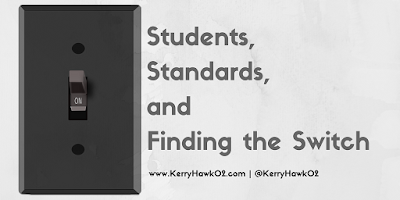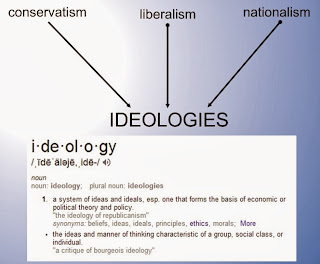Students, Standards, and Finding the Switch
Recently I was honored that the people at The Learning Counsel asked me if I'd author their quote of the week. Inspired by my friend Dr. Robert Dillon's thinking in his recent post for them, I decided to focus the quote on a topic in which educators are getting mixed messages.
My fellow educators have commented with affirmations and encouragement to the posts on Twitter and Instagram showing the graphic above. I think there are a few reasons why the idea expressed in the quote is speaking to people.
They Know How to Find the Switch
Teachers are charged with helping students master new information and new skills day after day, year after year. Anyone can walk into a classroom, assign a reading passage and whip up a worksheet for a child to complete. Skilled creative teachers do much more than that. They take some time early in the school year to get to know each student. They know learning is more likely to happen when they remember to think of themselves as teaching children first, and teaching math/history/reading/science second.
For example, if we need a 9th grader to truly understand the massive risk American leaders took when writing and publishing the Declaration of Independence, we need to help them link the emotions they've felt as an emboldened rebellious adolescent to that act of political rebellion that occurred in 1776. Great teachers are able to trigger these emotions and then unleash learning at the right moment, so the purpose and impact of the Declaration is something their students will never forget. Now this is just one example, but skilled teachers can create similar experiences for students when teaching algebra, poetry analysis, or music composition.
When it Comes to Students and Standards, Students Come First
While standards-based data collection and data analysis are essential to help teachers effectively respond to student strengths and weaknesses, it is even more essential that the teacher has established a healthy genuine relationship with that student. When students only receive feedback in the form of numbers and grades – data – they are less likely to be motivated to try again or improve on their own. Conversely, as Dan Pink explains in Drive, intrinsic motivation is a more effective driver. So when a teacher has taken the time to get to know a student and build that genuine relationship, the teacher knows what that student values and will be able to link those values to a standards-based learning task.
The results: students and teachers enjoy learning together, teachers share both personal and data-driven feedback with their students, and students understand both the standards they need to meet and how to meet them.
While it is important for educators to have standards to help guide their practice, we must remember that even a thorough and clear set of standards will not help students learn on their own. Effective teachers – the ones who take the time to get to know their students and are creative enough to trigger that switch in them – are the key to student learning.




.jpg)
Comments
Post a Comment